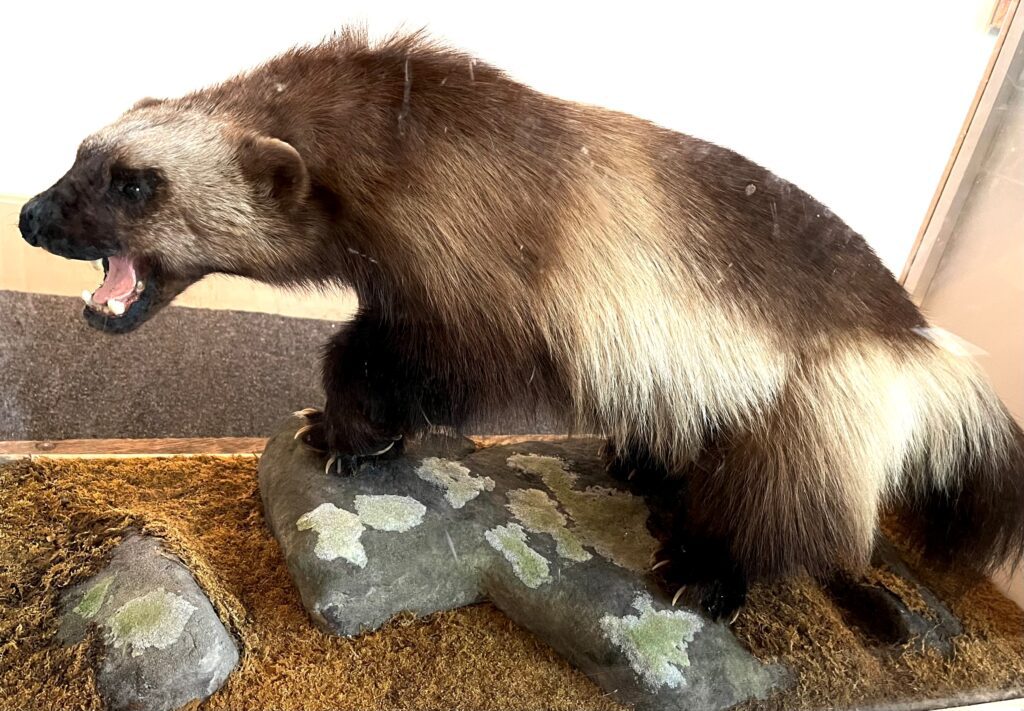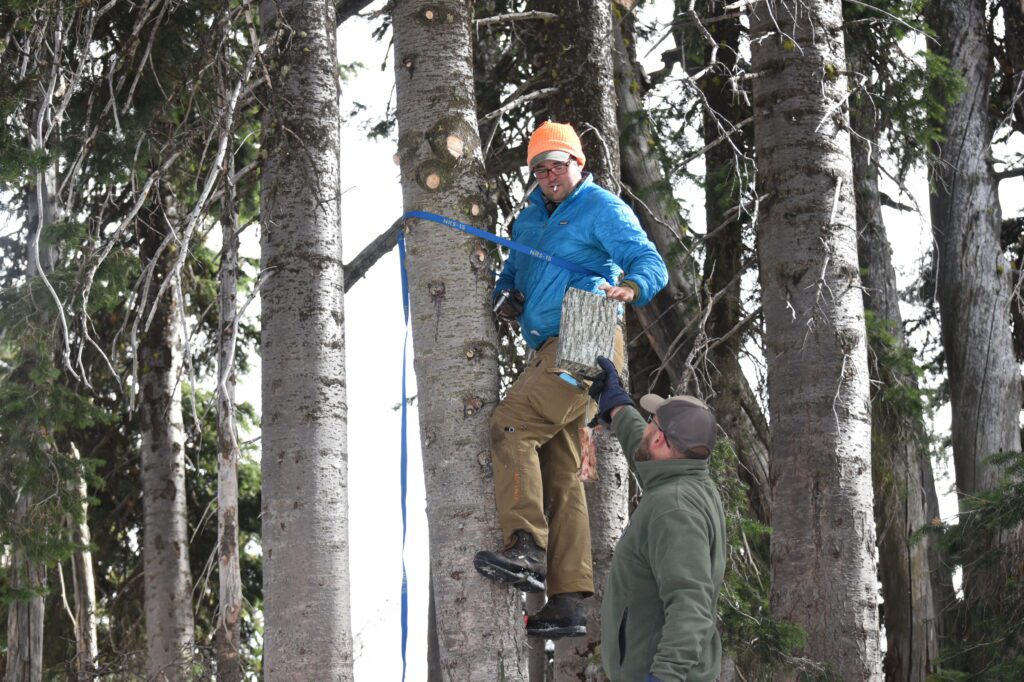by Pat McShea

Technology has revolutionized the work of wildlife biologists, but among those who study wolverines, long waits for field-collected information about these large members of the weasel family still occur. Because wolverines are known to patrol enormous home ranges, Cory Mosby, Furbearer Staff Biologist with Idaho’s Department of Fish and Game, relies upon strategically placed camera traps as effective monitoring tools. As he explained in a recent Zoom interview from his office in Boise, deep snow at high elevations can delay the retrieval of video and photographic evidence for months. “There’s a few places we placed cameras for over-the-winter wolverine studies where we weren’t able to retrieve the devices until July.”
Our discussion of wolverine research occurred just after the species received accolades as the 2023 champion of March Mammal Madness (MMM), the wide-reaching, ten-year-old educational project that masquerades as a tournament mimicking competition, but is in no way affiliated with, the NCAA college basketball tournament. The online event, founded and directed by Professor Katie Hinde of Arizona State University, challenges participants to predict outcomes for a widely branched bracket’s worth of hypothetical combative wildlife encounters. Reference material links on the MMM website encourage fans to make informed decisions, and as the tournament’s hypothetical encounters unfold, additional information about the combatants is shared via timely narrative reports.
This year, any MMM fan who tracked the wolverine’s six victory championship campaign undoubtedly learned lots of information about this carnivore with solitary ways, a bone-crushing bite, and a fierceness sufficient to intimidate even bears and wolves.
On Zoom, much of Mosby’s information sharing focused on historic wolverine distribution. He explained how, by the 1930s, a species once found across much of the American West and even in sections of several Great Lakes states, was largely extirpated in the lower 48 states by predator control programs, landscape alteration, and unregulated hunting and trapping. However, during the nearly eight decades since, changes in public policies and attitudes eventually created conditions that enabled animals from western Canada to naturally re-colonize portions of four states – north-central Washington, northern and central Idaho, western Montana, and northwestern Wyoming.
In 2010, a proposed listing of these animals under the Federal Endangered Species Act prompted the establishment of the Western States Wolverine Conservation Project, a multi-year investigation in which essential early work, beginning in 2016, involved establishing baseline information about the numbers and movements of the animals under study.

When presented with the question, “What do you wish the public knew about wolverines?” Mosby had a ready answer. “This might not align with popular opinion, but I wish more people realized that, as a species, at the moment, wolverines are quite secure. In Idaho today, wolverines occupy all available habitat. The population in the western U.S., the animals I’ve helped study, are on this continent, a southerly extension of a species found around the globe at northerly latitudes in suitable habitat. ‘Holarctic’ is the term that summarizes this enormous distribution.”
Mosby cites a warming climate as a big concern for wolverine populations in southernly latitudes, explaining how the same deep snow deposits that delay camera retrieval in project studies also allow female wolverines to catch sufficient kills as food for kits too young to forage on their own.
The wildlife biologist’s overall advice is to pay attention to both the local situation and the big picture. His career track, he relates, was influenced by the sudden realization of how small forces influence big systems. “I was a pre-med major at the University of Missouri taking lots of biology classes, and in one of them a visiting lecturer gave a presentation about how northern flying squirrels influence the health of entire forests by distributing spores as they feed on fungi. I realized then I wanted to work studying wildlife.”
Patrick McShea is an Educator at Carnegie Museum of Natural History.
Related Content
March Mammal Madness 2023: Learn and Win
March Mammal Madness and Middle School Science Class
World Pangolin Day 2023 – The Mysterious Brain Bone
Carnegie Museum of Natural History Blog Citation Information
Blog author: McShea, PatrickPublication date: June 15, 2023
